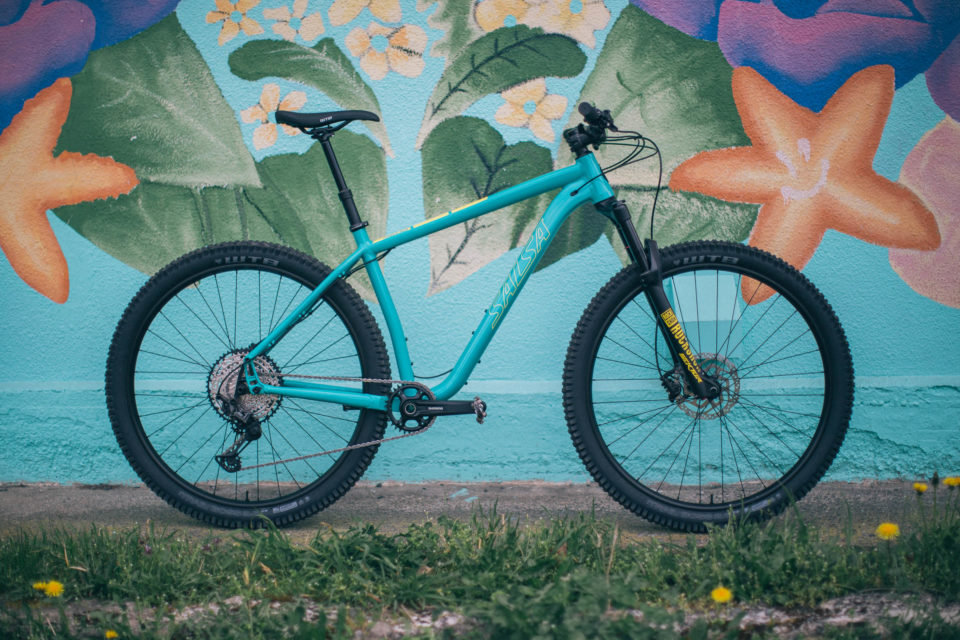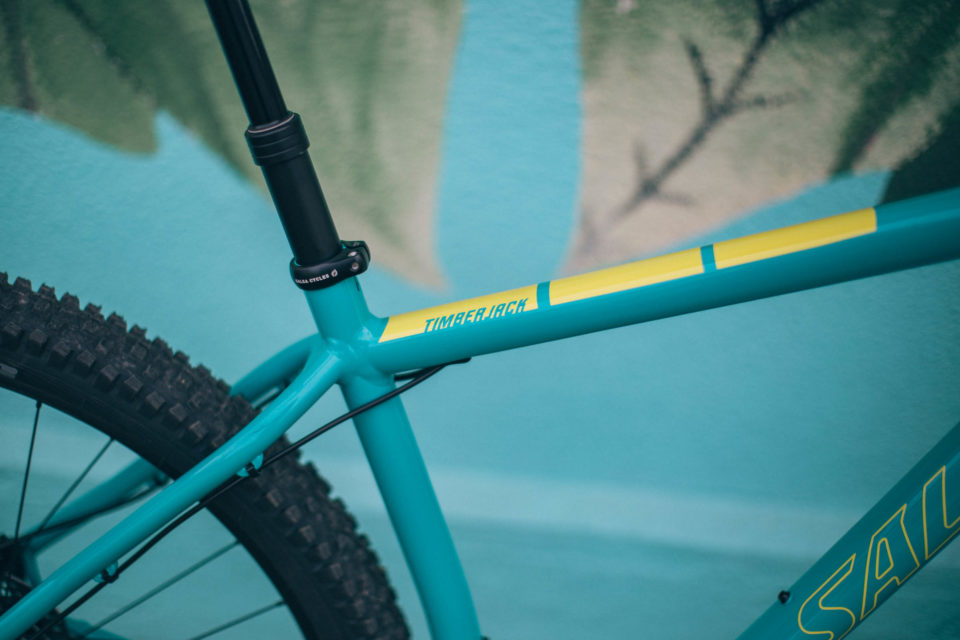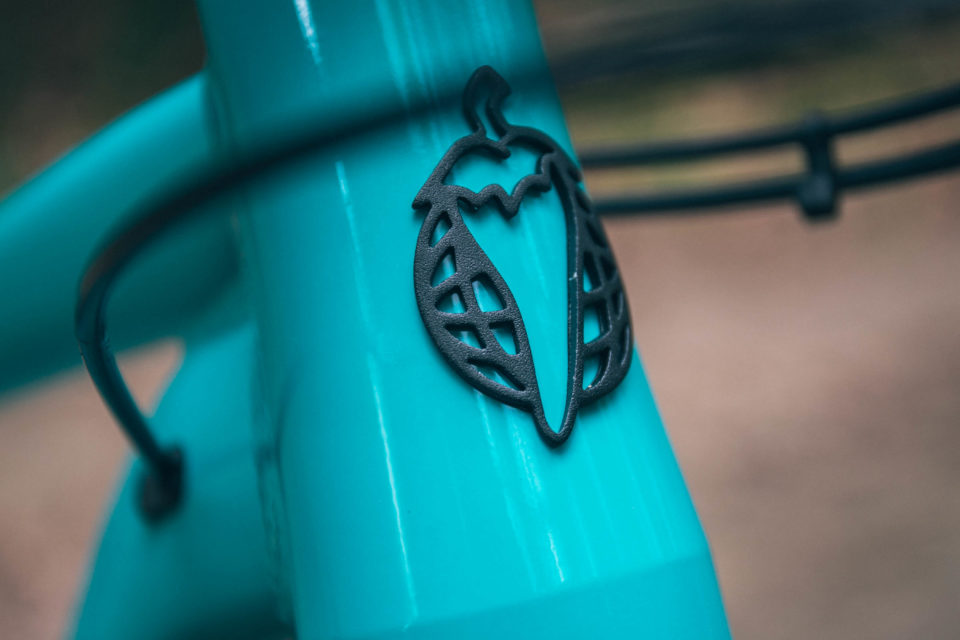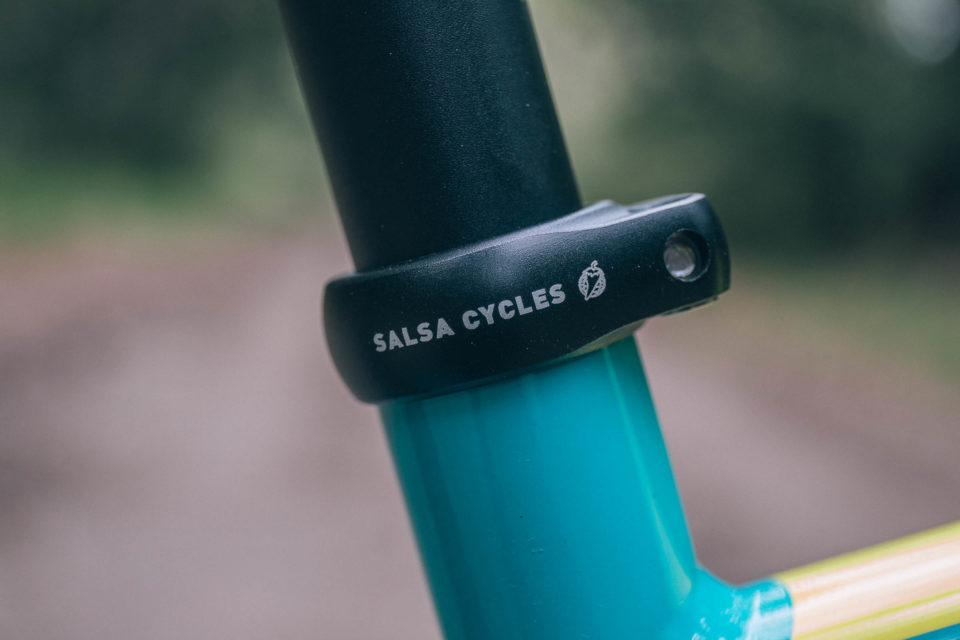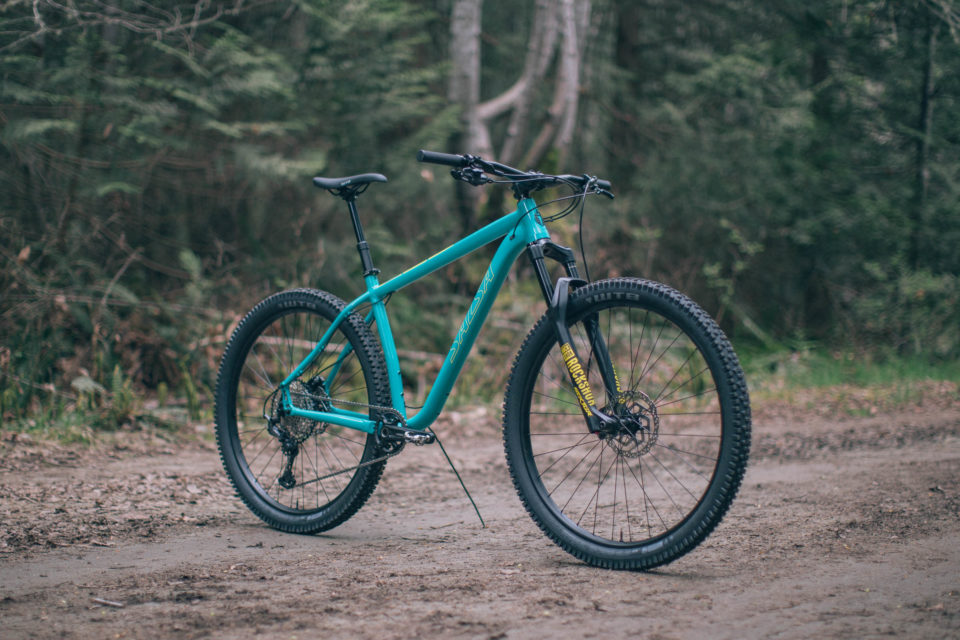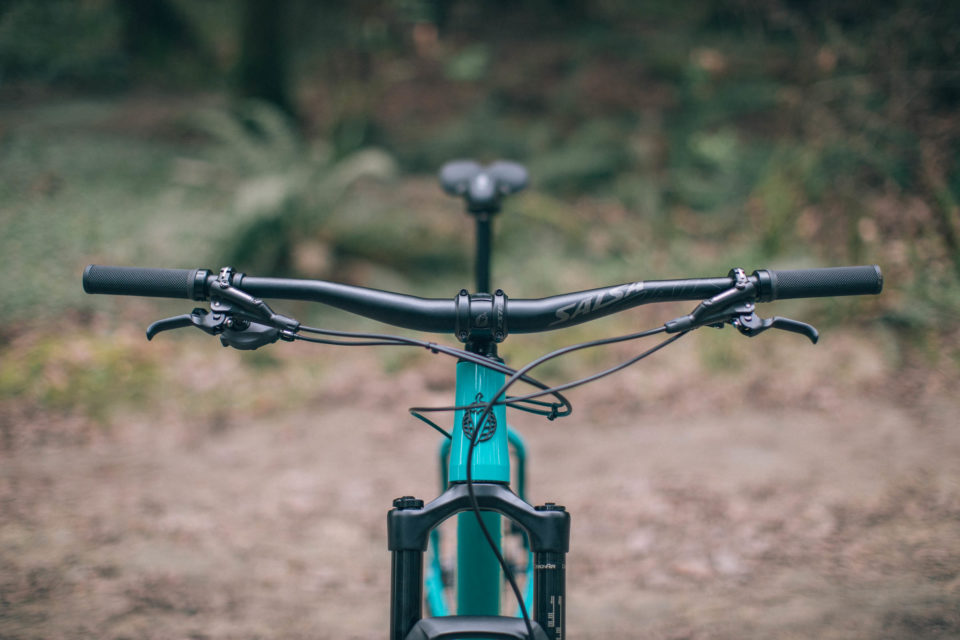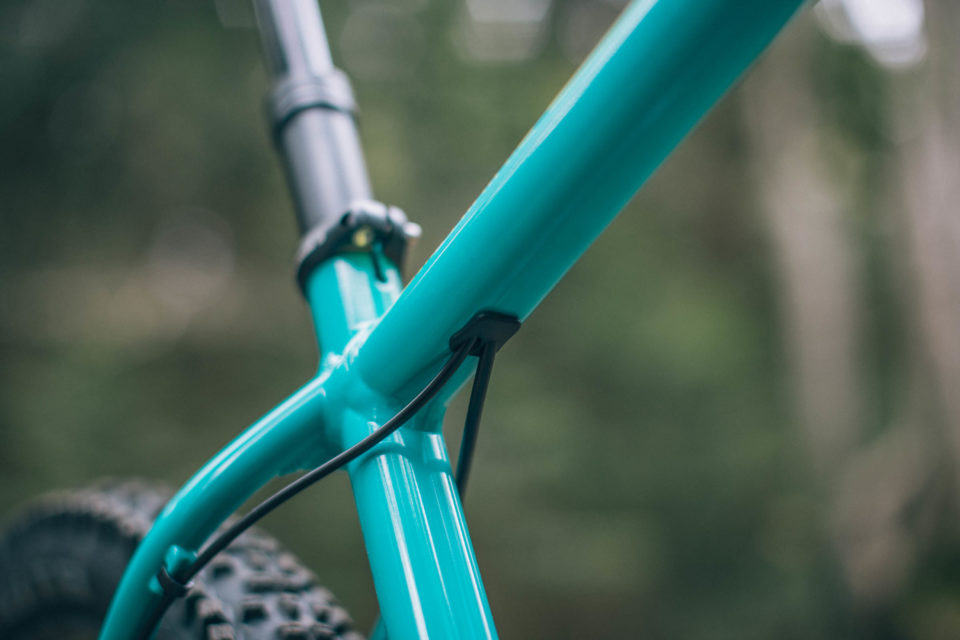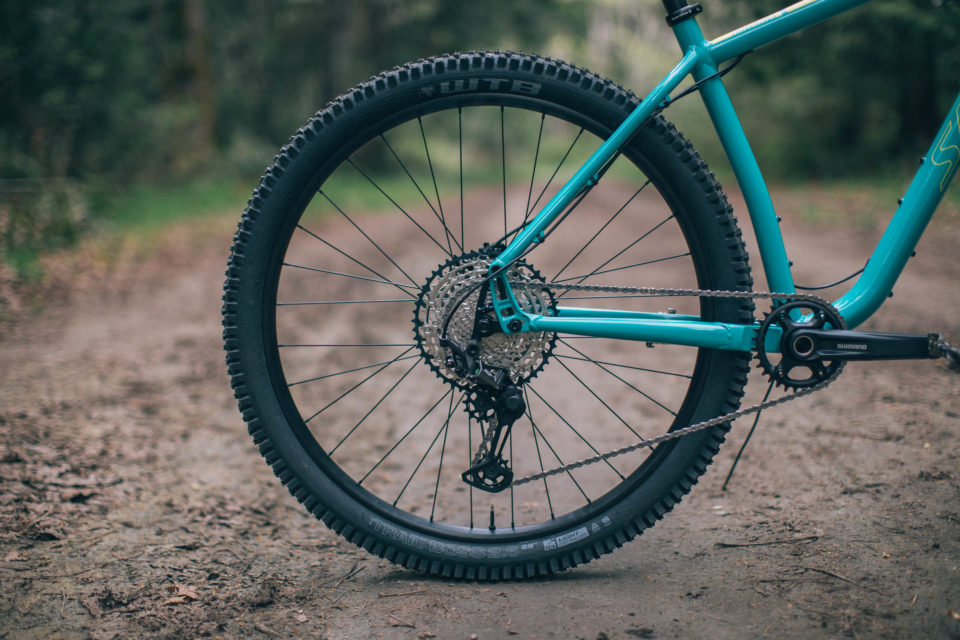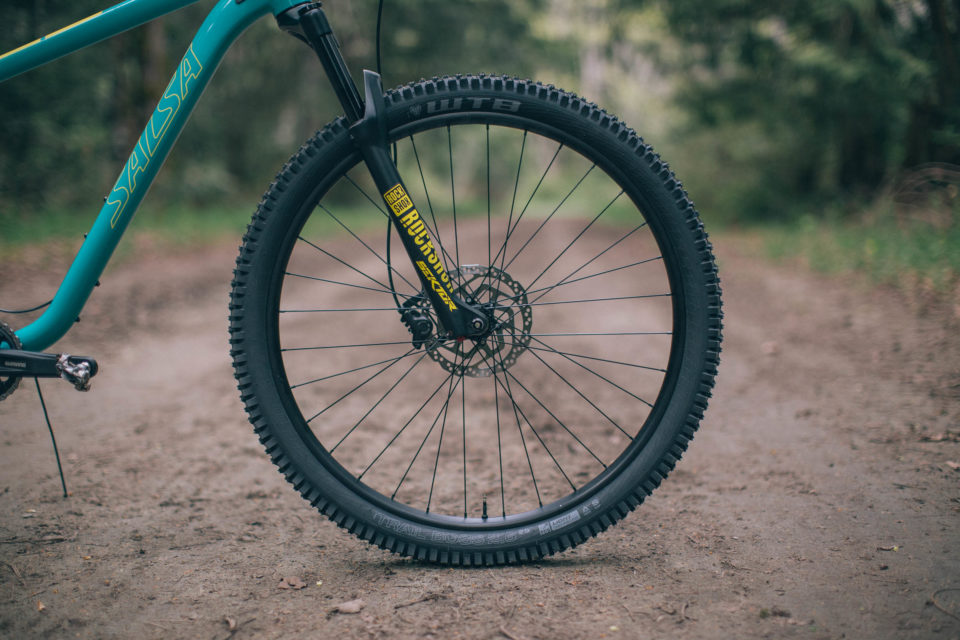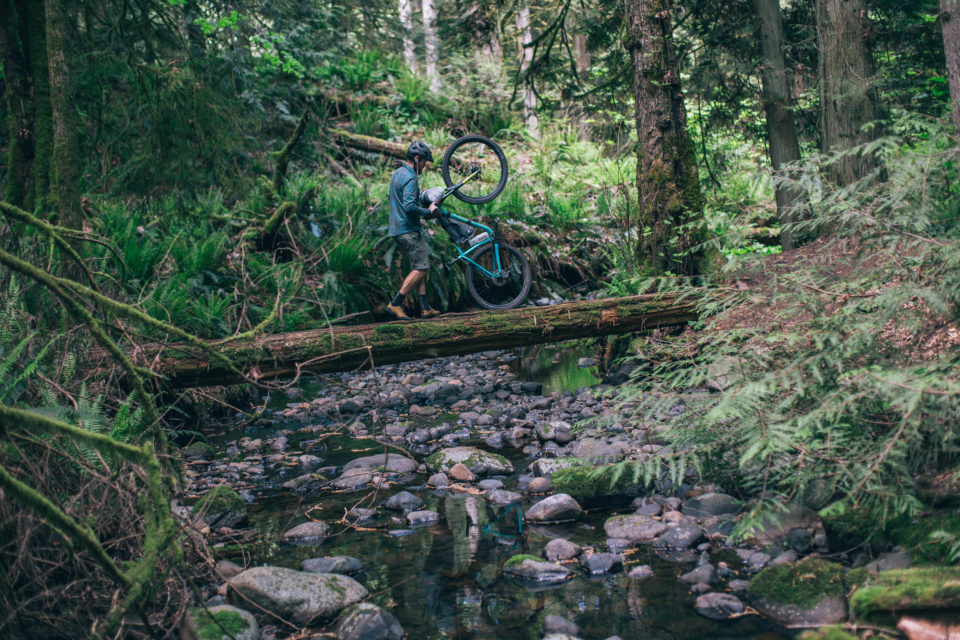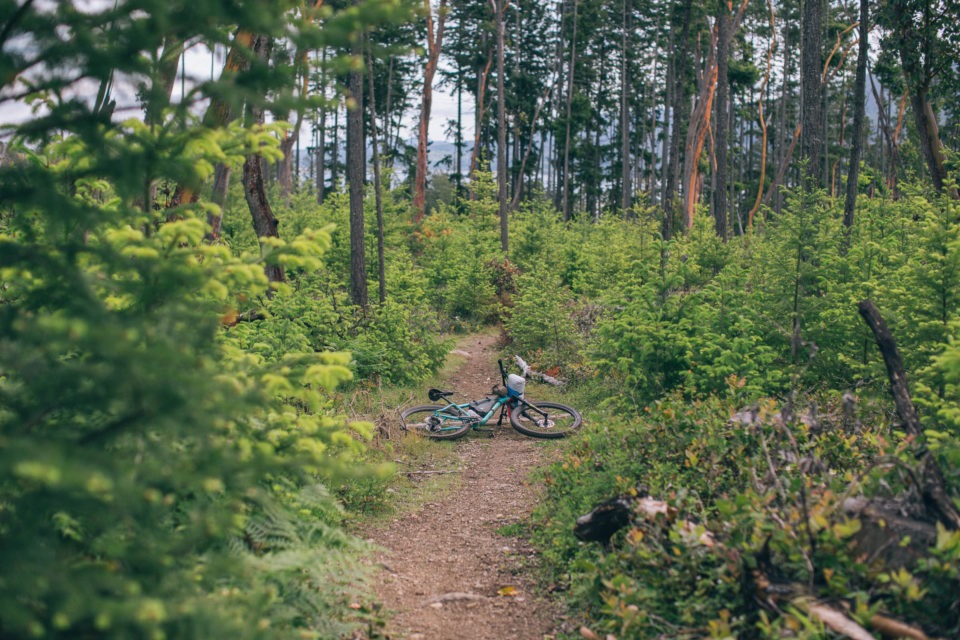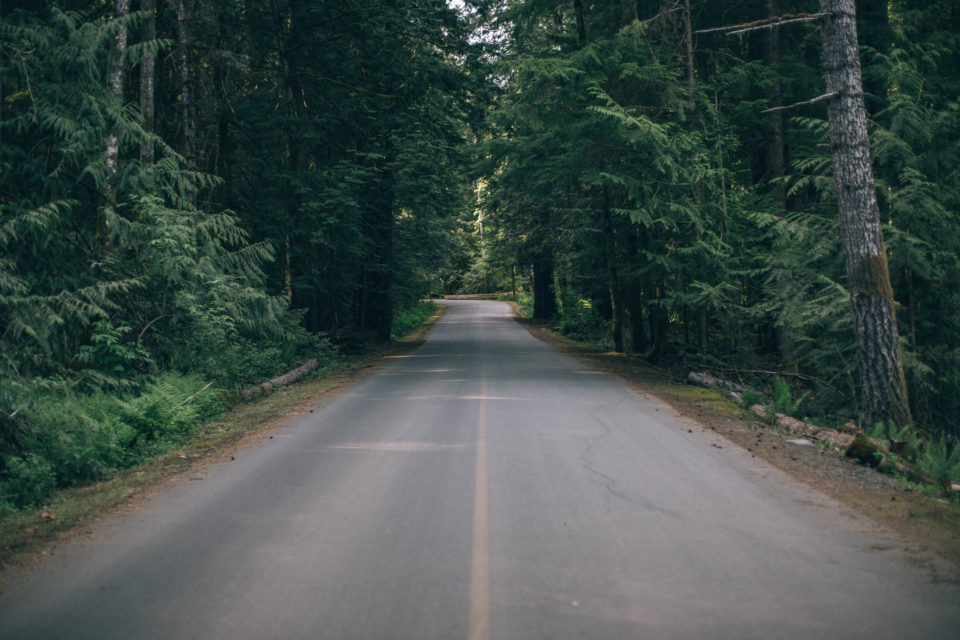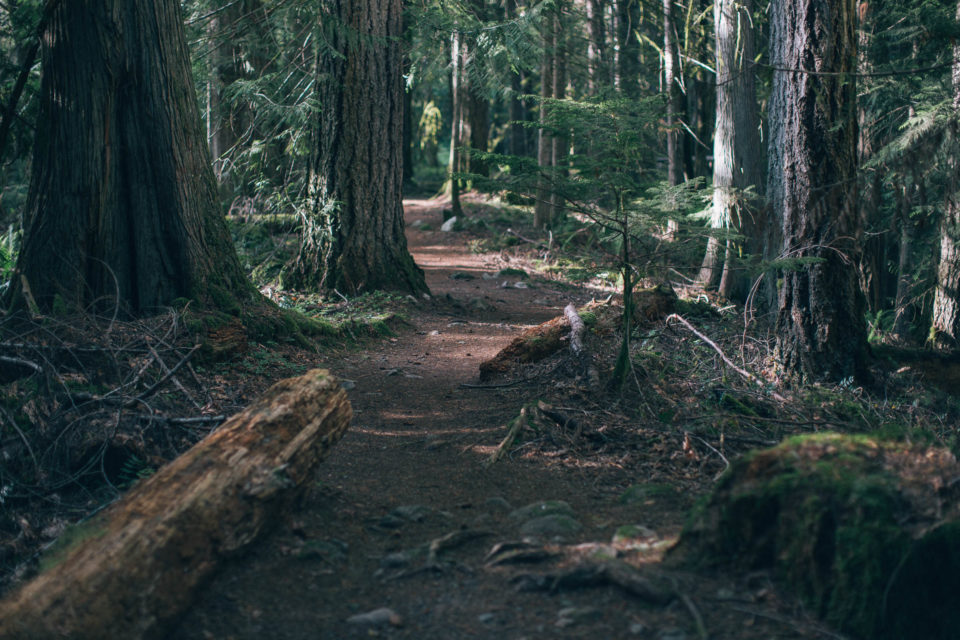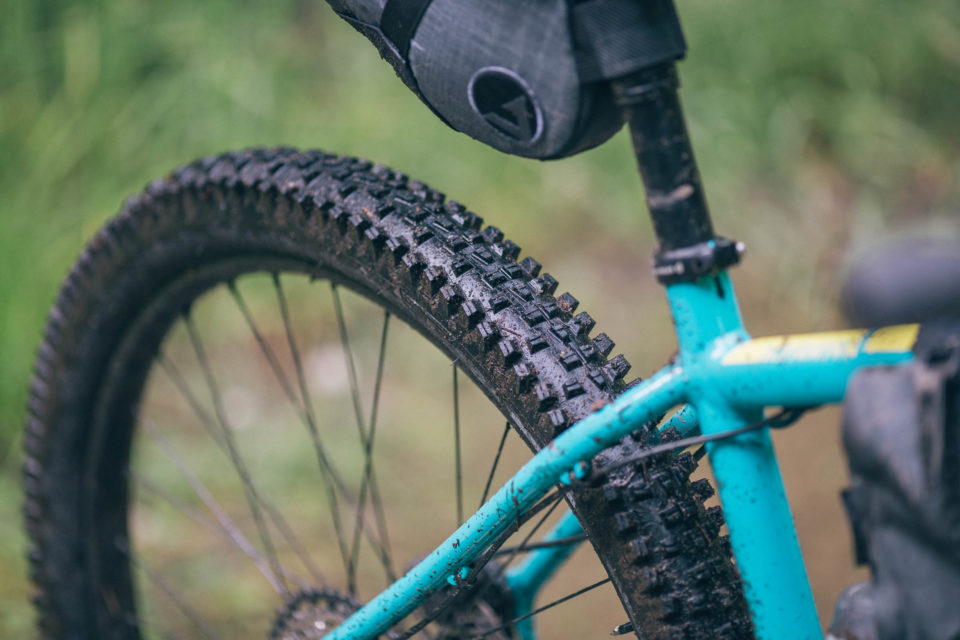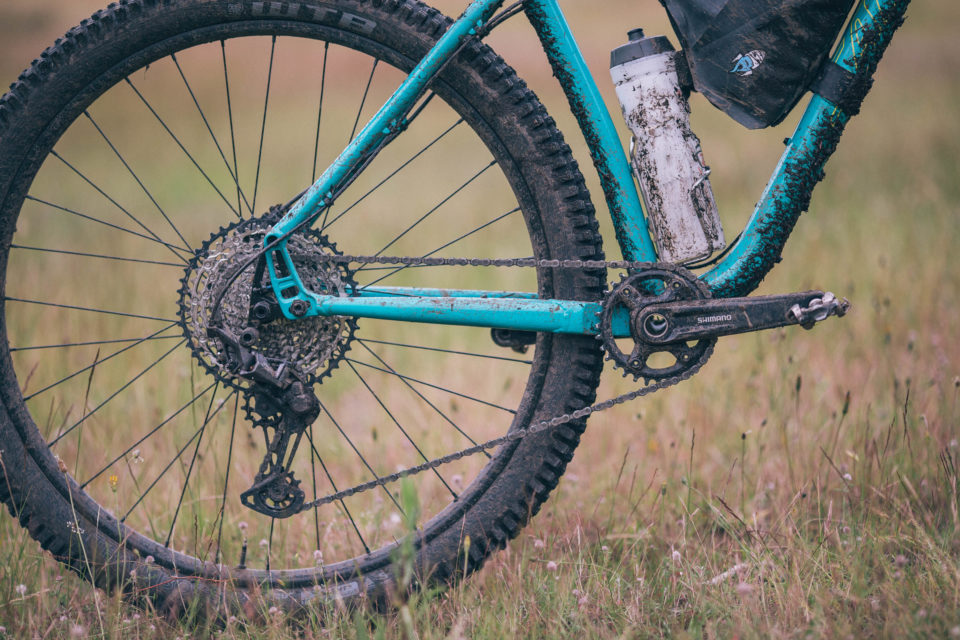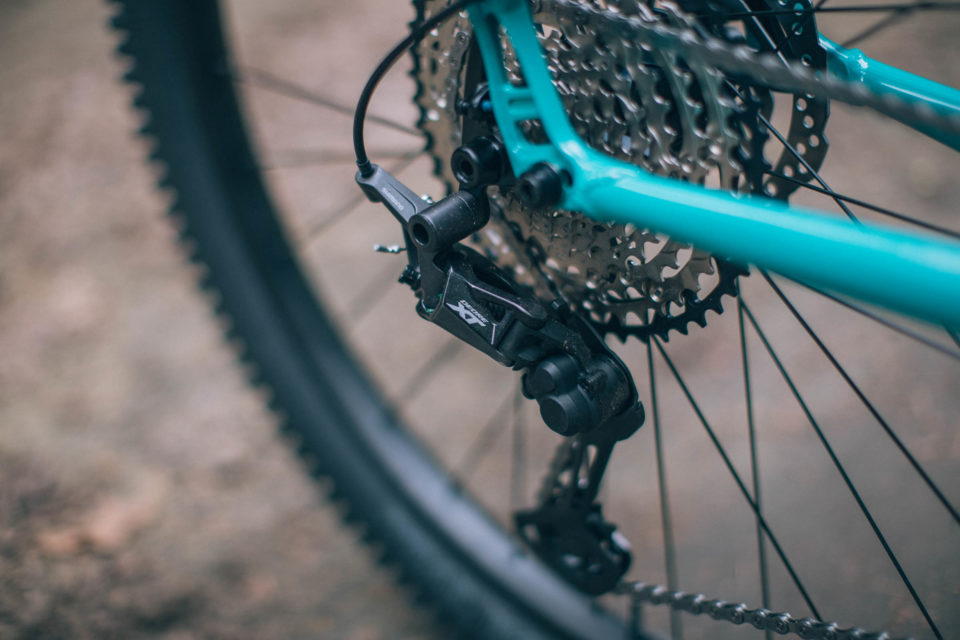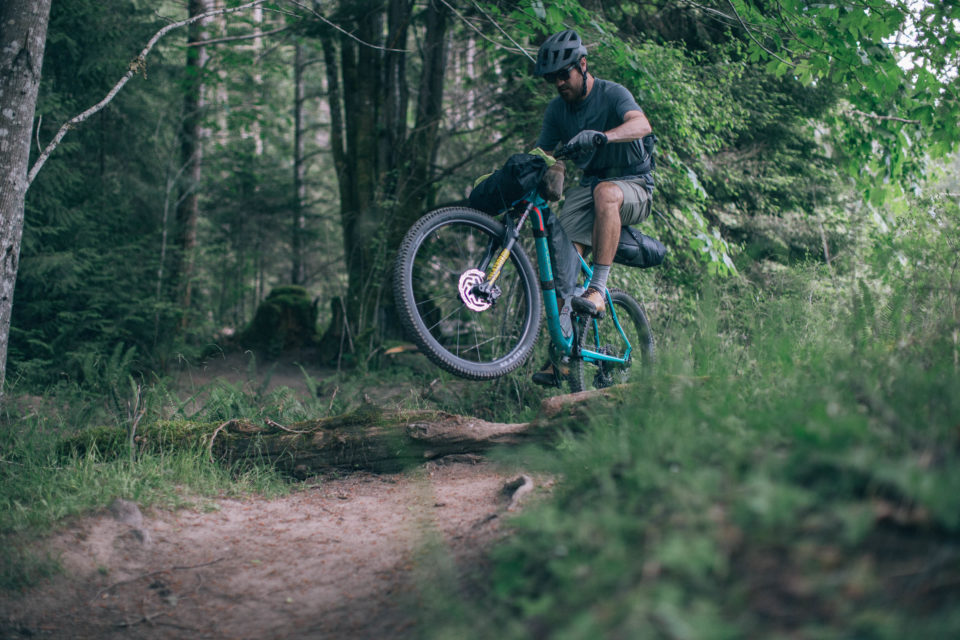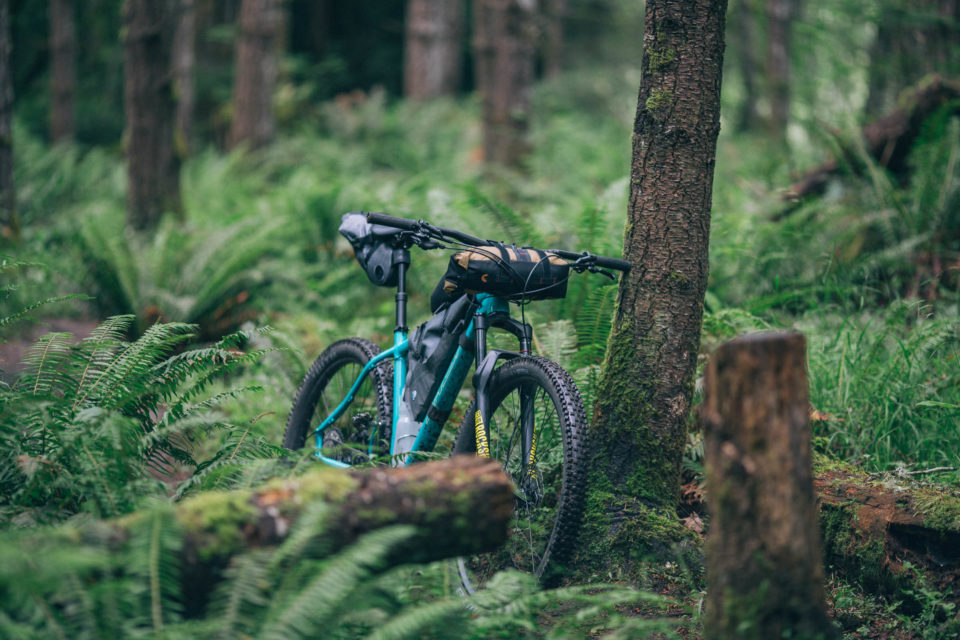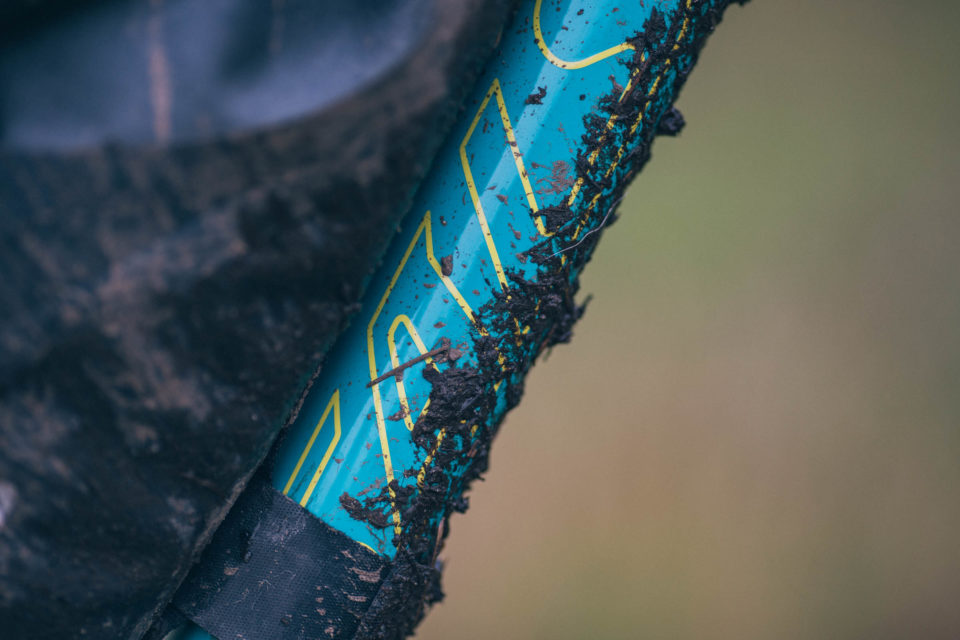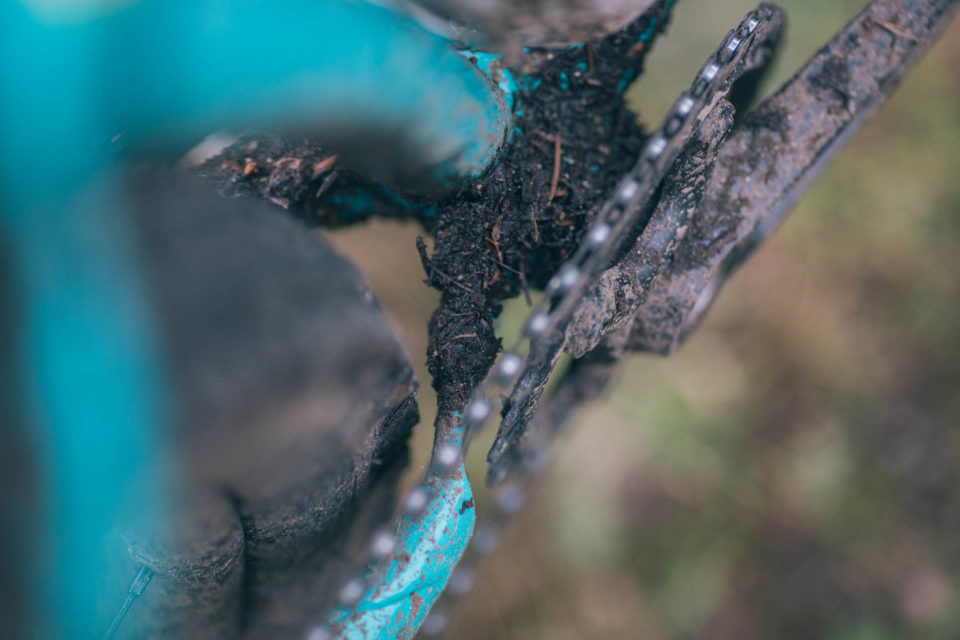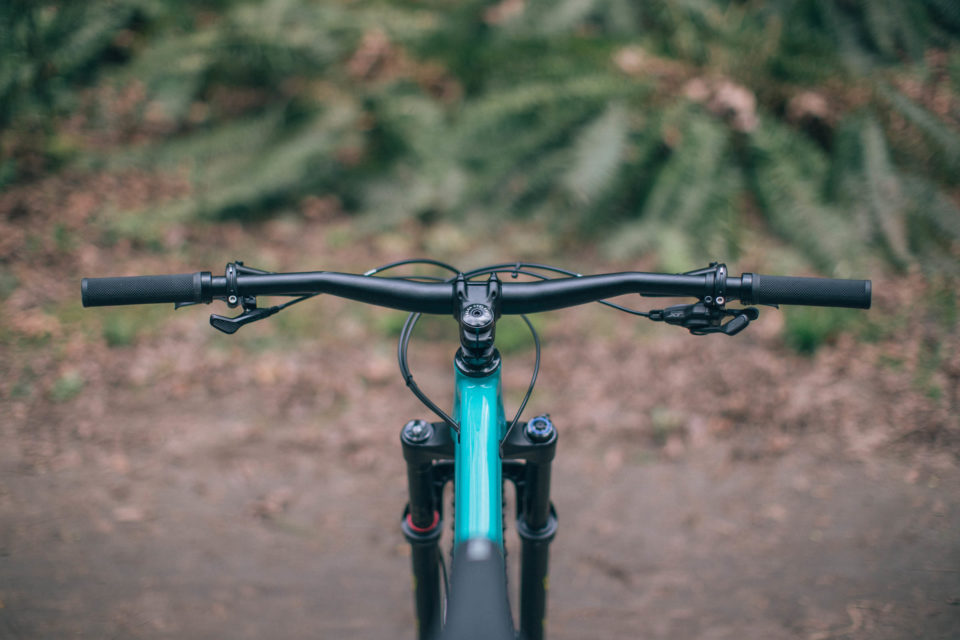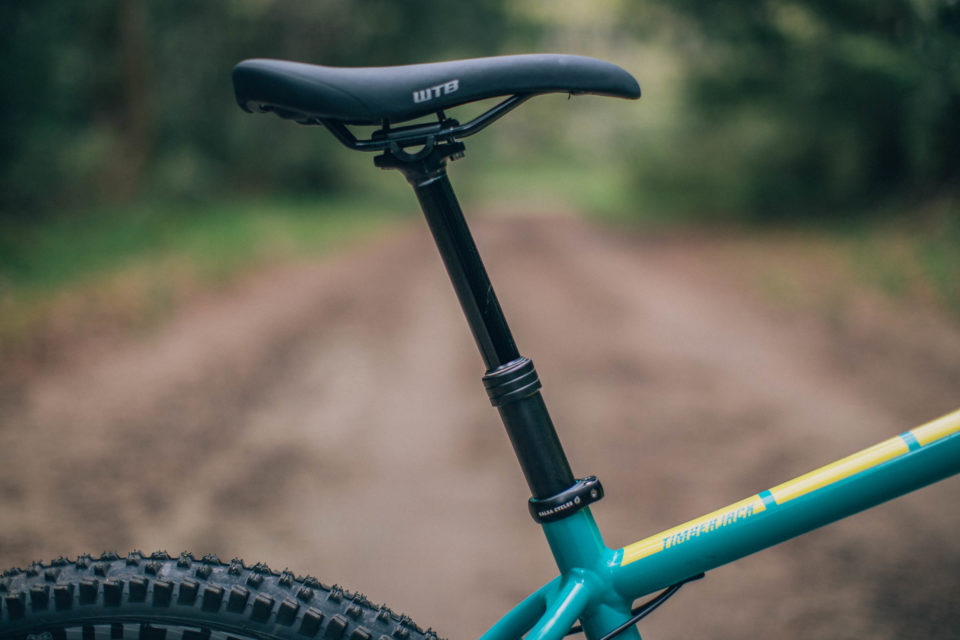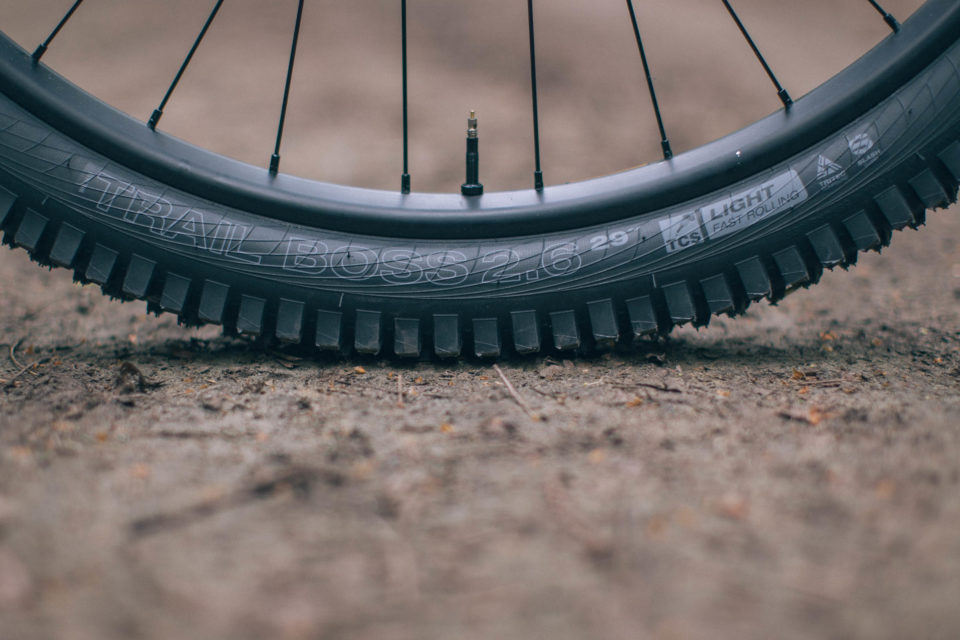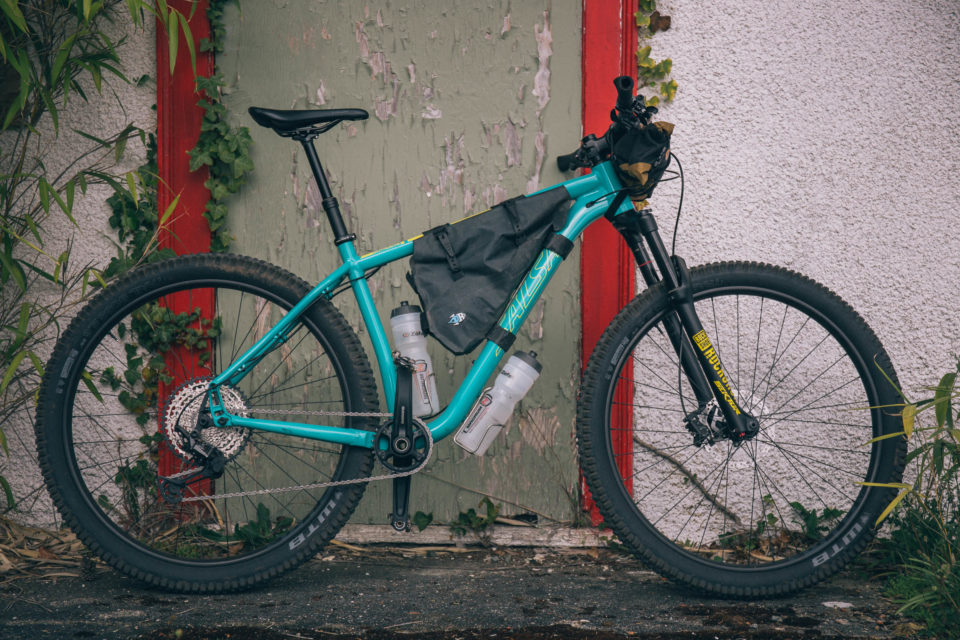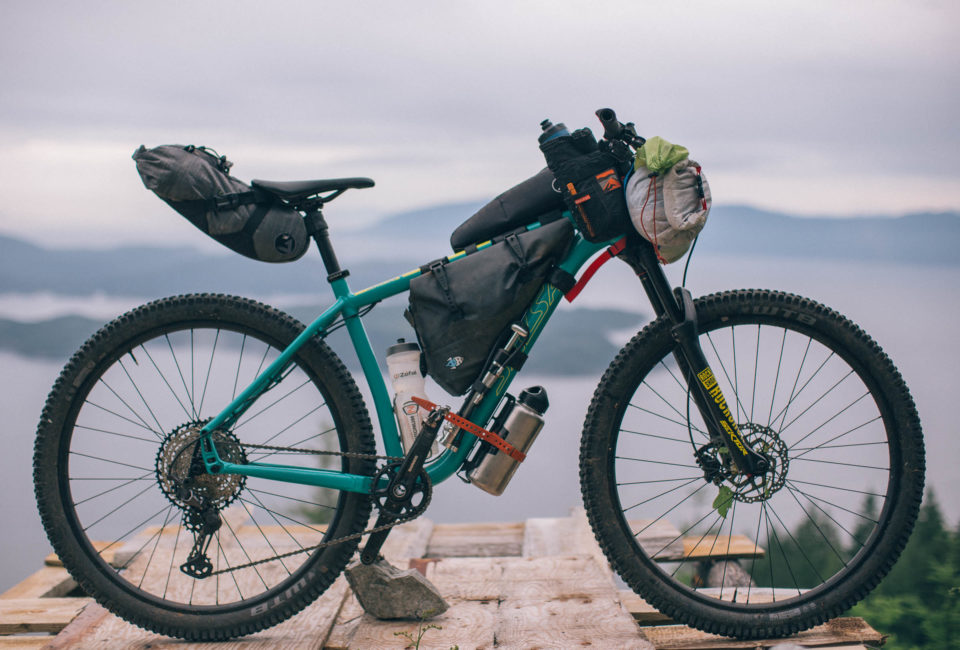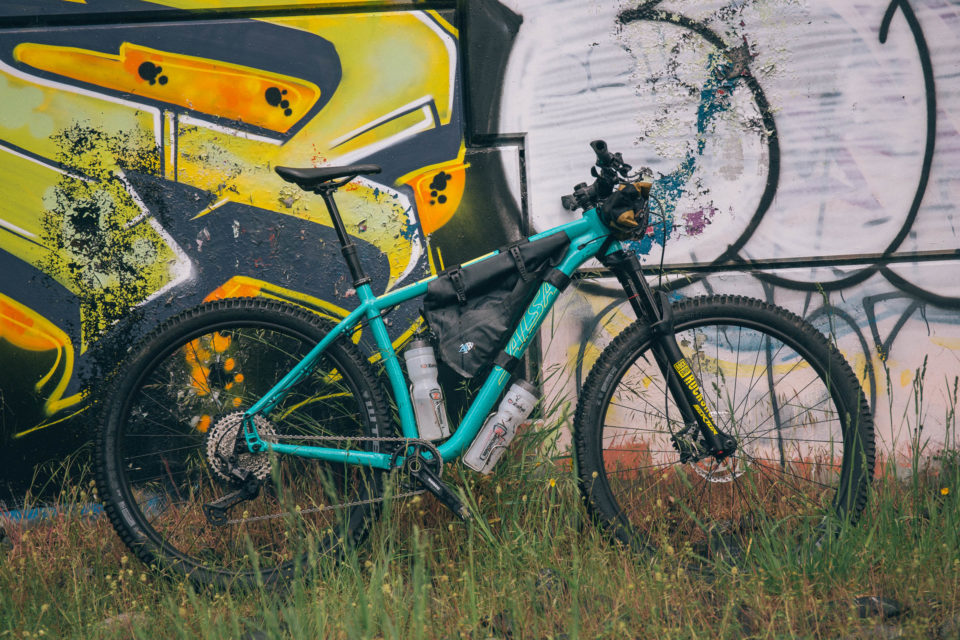Salsa Timberjack Review: Value Meets Versatility
Capable and well-specced alloy hardtails that don’t cost a fortune are few and far between—often built with low-end components that aren’t suitable for technical singletrack and bikepacking. The Salsa Timberjack aims to change that. After three months of riding the 2020 Timberjack XT 29 build on a mix of challenging British Columbia trails and several bikepacking trips, Miles reports back with his thoughts. Find the full review here, plus a comparison with five similar alloy mountain bikes…
PUBLISHED Jul 7, 2020
It’s easy to get caught up in the world of space metal and ultralight carbon frames. We’re guilty of riding, and enjoying, high-end bikes and components here on the site, but are striving to showcase more affordable options. The problem is that shopping for an affordable bikepacking bike can be a delicate balancing act, and arguably requires more attention than purchasing a $5,000+ titanium dream bike. In the past, it wasn’t easy to find a quality aluminum frame with good geometry, specced with components that make sense for its intended use. Thankfully, that’s starting to change. We’re seeing an increasing number of bikes in the $1,800 to $2,200 range that don’t skimp on features and overall performance—the Salsa Timberjack included.
Optimized for singletrack, bikepacking, and off-road exploration, the 2020 Salsa Timberjack is the most capable hardtail mountain bike in the brand’s lineup. Short chainstays, a relatively slack front end, and chunky tires immediately showcase the Timberjack’s true nature for rowdy trail riding and general good times. The frame is made from a blend of proprietary 6066-T6 double and triple-butted aluminum tubing for the main triangle and 6061-T6 for the chainstays and seatstays.
A few months ago, I received a 2020 Salsa Timberjack XT 29 for review, built up with a Shimano XT 12-Speed drivetrain, a 130mm travel Rockshox Sektor fork, WTB wheels and tires, and a TransX dropper post. As far as components go, it’s got a lot going for it, but I wanted to see how the entire package stacked up and whether or not a mid-range aluminum hardtail could handle the chunk of Vancouver Island’s singletrack. After lots of hard riding, including long singletrack trail rides, several shorter bikepacking trips, and a three-day scouting mission to Powell River—I’m ready to report back on my findings.
The Difference of a Year
- Highlights (Large)
- Angles: 67.6° Headtube, 73.2° Seattube
- Chainstay: 420-437mm
- Bottom Bracket: 72mm Threaded
- Hub specs: 148×12 (rear); 110×15 (front)
- Seatpost Diameter: 30.9mm
- Max Tire Size: 27.5 x 3.0” / 29 x 2.6″
- Price: $1,999
Salsa didn’t update the Timberjack’s geometry for 2020, or any frame specs, for that matter. Instead, they increased the number of build options to include both 29 x 2.6” and 27.5 x 2.8” options, based around Shimano SLX 12-Speed, SRAM NX Eagle, and Shimano XT 12-Speed. Although it may not seem important, the option for Shimano 12-speed is a nice bonus for those looking to find a bikepacking-friendly hardtail that doesn’t cost a fortune. Salsa made the jump to Shimano 12-speed swiftly, and it makes so much sense for a bike like the Timberjack. In fact, when the 2020 Timberjack was first announced, I’m not sure there were any other aluminum hardtails in the same price range that were being specced with Shimano 12-speed. Although Logan has been dealing with a sticky derailleur clutch, I’ve had only positive experiences using it on several bikes now, and it’s by far my favourite drivetrain to date.

The Timberjack comes standard with Salsa’s adjustable Alternator dropouts, which opens up the possibility for singlespeed or Rohloff drivetrains, as well as different axle types. It also has internally routed cables and underside downtube bottle mounts. The Timberjack’s geometry has been tweaked very minimally over the years, maintaining short chainstays, a long front end, and wide bars. Although the original 29er Timberjack models were specced with narrower 29 x 2.25” tires instead of the chunky 2.6” rubber found on the latest builds, the rest is nearly identical. Something interesting I noticed is that the Timberjack has maintained a relatively slack seat tube angle, at 73.2°, which strays from the industry’s transition to steep (~75°+) angles. Although this may not be everyone’s preference, it does add to the bike’s overall versatility. More on that later.
One thing to note is that Salsa announced a new budget hardtail this year, the Rangefinder, which is partly why the Timberjack (the Woodsmoke’s replacement) is now seeing higher-end components and increased prices, while the Rangefinder fills the $1,099 to $1,299 range. Although the Rangefinder shouldn’t be overlooked, and appears to be a great entry level mountain bike, you lose out on some nice features like a rear thru-axle, Alternator dropouts, and a mix of bikepacking-worthy components.
The Timberjack is available in 10 complete builds that range from $1,249 to $1,999 USD, as well as a frame-only option for $449 or a titanium frame for $2,499. Complete builds are based around either 27.5 x 2.8” or 29 x 2.6” wheels, a 130mm travel fork, and a 1×10, 11, or 12-speed drivetrain—depending on the model.
Modern-ish Geometry
Since its initial release in 2016, Salsa has positioned the Timberjack as a do-everything hardtail, and described it as long and agile due to its modern trail bike geometry. However, its modern trail bike geometry, when compared against the latest breed of mountain bikes, isn’t really that modern at all. It’s easy for bike manufacturers to make big claims when it comes to geometry, but the reality is often a totally different story.
There are several reasons why so many modern trail bikes are being designed with steep seat tube angles. A steep seat tube helps offset the slack headtube and long front end found on many mountain bikes, helping position the rider over the bottom bracket rather than over the rear tire—a trait that’s most noticeable while climbing. Of course, there are alot of other unaccounted factors at play, but it’s hard to argue with the biomechanics and efficiency of having your hips, knees, legs, and feet all stacked above the bottom bracket. A lot of riders agree that there are practically no disadvantages to steep seat tube angle, when paired with the front end of a modern mountain bike, and in theory, I agree.

The Timberjack has stayed true to its relatively slack 73.2° seat tube angle, and on long, seated climbs there were physical signs that I wasn’t in the most efficient pedaling position—the most notable being increased hamstring tightness after my first few rides. Don’t get me wrong, I’ve thoroughly enjoyed riding the Timberjack and the overall package, geometry included, is close to spot on for bikepackers who appreciate the prowess of an aggressive hardtail. However, a closer examination of the geometry might be helpful for those comparing similar hardtails and looking for the perfect geometry. After all, drivetrains and forks can be swapped out or upgraded.
For the sake of argument, let’s throw a wrench into everything I just laid out. One thing the cycling industry doesn’t take into account when designing mountain bikes with ultra steep seat tube angles is their ability to run rigid forks. For most long-travel, heavy hitting hardtails, this makes total sense. However, I think this is where the Timberjack’s seat tube angle and long front end hit a sweet spot from a bikepacking perspective. It’s still possible to swap out the fork for something rigid like the ENVE or Niner Rigid Carbon Mountain Bike Fork, in the 490mm length range, that’ll still allow for big tire clearance, boost hub spacing, and will effectively steepen the seat tube to help loosen up those hamstrings a bit. If I had to put the Timberjack into a more specific category, I’d say it’s a versatile-trail hardtail, with enough teeth to handle steep descents and rough trails, but not too aggressive for bikepacking and multi-surface riding. There’s not much the Timberjack can’t do, but its conservative angles aren’t as wild as some of the new age hardtails we’re seeing from brands like Cotic, Chromag, or even Norco.
Alloy Hardtails Angles Compared
I was curious to see how some similarly priced aluminum hardtails’ geometry compared, just to find out where the Timberjack sits, so I put together the following chart. I included seat tube angle (STA), head tube angle (HTA), reach, and stack, and further down I dig into their different build kits too. Keep in mind that these numbers provide only a quick glance at their overall geometry, and may only be useful for those who have ridden similar bikes.
| Product | STA | HTA | Reach | Stack |
|---|---|---|---|---|
| Kona Honzo DL | 75° | 68° | 474mm | 642mm |
| Specialized Fuse Expert 29 | 74° | 66.5° | 460mm | 639mm |
| Santa Cruz Chameleon D Alloy 29 | 72.8° | 67.3° | 460mm | 625mm |
| Rocky Mountain Growler 50 | 75° | 64° | 470mm | 627mm |
| Niner AIR 9 | 74° | 68° | 445mm | 634mm |
| Salsa Timberjack | 73.2° | 67.6° | 454mm | 620mm |
Timberjack XT 29 Build Kit
I mentioned earlier that finding a well-rounded alloy hardtail for $2,000 is becoming easier, but that doesn’t mean they’re all equal. The majority of bikes in this category have a weird mishmash of components that don’t make all that much sense together, and more modern features are reserved for higher-end builds—mainly full-suspensions. As a huge Shimano fan, I was stoked to see a Shimano XT 12-Speed build option in the lineup, as well a more affordable SLX option for just $1,699. For those who don’t share my excitement for Shimano’s latest drivetrain, Salsa also offers a SRAM NX Eagle build.
When compared against some other similarly priced hardtails, the Timberjack XT 29 looks like pretty good value. It uses a mix of SLX and XT components: an SLX cassette, chain, and crankset, with an XT shifter and rear derailleur. That’s a totally acceptable combination, considering how little of a difference there is between XT and SLX cassettes. The Deore level MT501 hydraulic brakes have performed fine, and the WTB ST i29 rims are still spinning true. I was a little surprised to see a cup-and-cone style Shimano MT400 front hub, and although it would have been nice to see sealed cartridge bearing hubs on both the front and back, it’s an easy place to help keep things affordable that can always be upgraded down the road.
Salsa kept the price down with a more affordable fork, which is on the lower end when compared with similar hardtails. Although I really haven’t had any issues with the RockShox Sektor RL fork, it certainly isn’t on the same level as XT 12-Speed, and has required me to run a higher pressure than what I’m used to to avoid bottoming out. That said, I’ve been pleasantly surprised with its performance on the trail, albeit it has been a little noisy when cycling through its travel. Last year, RockShox updated most of their forks, including the Sektor, which saw some substantial changes. Moving forward, the Sektor RL comes specced with boost spacing and a highly tunable DebonAir spring, which supposably feels more like the Pike and Revelation forks. If the Sektor fork holds up long term, the Salsa Timberjack XT 29 build has a lot going for it.
Salsa Timberjack XT 29 Build Kit
- Frame: 6066-T6 & 6061 Aluminum
- Fork: RockShox Sektor RL, 130mm
- Seatpost: TransX Dropper Post
- Headset: FSA Orbit 1.5E, Sealed Cartridge Bearings, 1 1/8″ x 1 1/2”
- Bottom Bracket: Shimano SM-BB52
- Brakes (Front): Shimano MT501, hydraulic two-piston, 180mm rotor
- Brakes (Rear): Shimano MT501, hydraulic two-piston, 160mm rotor
- Shifter: Shimano XT 12-Speed
- Rear Derailleur: Shimano XT 12-Speed
- Cassette: Shimano SLX M7100 Cassette, 12-Speed, 10-51T
- Crankset: Shimano MT610, 32T
- Chain: Shimano SLX
- Front Hub: Shimano MT400, 110x15mm
- Rear Hub: Shimano MT510, 148x12mm
- Rims: WTB ST i29 TCS 2.0
- Tires: WTB Trail Boss TCS Light/Fast Rolling, 29 x 2.6″, Folding Bead
- Handlebar: Salsa 35.0
- Stem: Salsa Guide 35.0
- Saddle: WTB Volt Sport
- Grip: Salsa File Tread Lock-on
Alloy Hardtails Compared
I put together another comparison of the same 29er alloy hardtails I looked at above, complete with drivetrain spec, fork, pricing, and links for more info. Keep in mind that not all drivetrains are specced complete with the stated line, the Timberjack included, but it should reference the derailleur and ideally the shifter as well.
| Product | Gearing | Fork | Price (USD) | Details |
|---|---|---|---|---|
| Kona Honzo DL | SRAM SX Eagle | Revelation 120mm | $1999 | Link |
| Specialized Fuse Expert 29 | SRAM NX Eagle | Gold RL 130mm | $2150 | Link |
| Santa Cruz Chameleon D Alloy 29 | SRAM NX Eagle | Recon RL 120mm | $1799 | Link |
| Rocky Mountain Growler 50 | SRAM NX Eagle | Gold RL 140mm | $1899 | Link |
| Niner Air 9 | SRAM SX Eagle | Marzocchi Bomber Z2 120mm | $1850 | Link |
| Salsa Timberjack XT 29 | XT 12sp | Sektor RL 130mm | $1999 | Link |

Bikepacking on the Timberjack
After riding the Timberjack for several months on a range of lightly loaded mixed surface rides, unloaded trail days, and a handful of bikepacking trips, I’m sold on 29 x 2.6” tires for bikepacking. When compared to my previously beloved 27.5 x 3” setup, I’m riding trails faster and clearing small obstacles easier while also zipping along gravel roads and steep climbs with less effort. I don’t miss 27.5+ at all, and I expect I’ll be finding a 29er wheelset for my Why S7 very soon. It’s great that Salsa offers so many different builds, including 27.5+ options, but I think the Timberjack is best suited for 29” wheels—especially for those who may eventually consider running a rigid fork for less technical riding.
Although the Timberjack put me into a semi-aggressive trail riding position due to its long front end and wide bars, I was still able to get enough spacers under the stem for what I felt to be totally comfortable for multi-day rides. Considering its relatively low price tag, the Timberjack held its own on plenty of technical and steep trails around Vancouver Island, as well as during a recent scouting mission to Powell River. While nearly everyone I saw was on a full-suspension mountain bike, the Timberjack constantly proved quite capable—partly due to its solid build kit—and incredibly fun to ride.
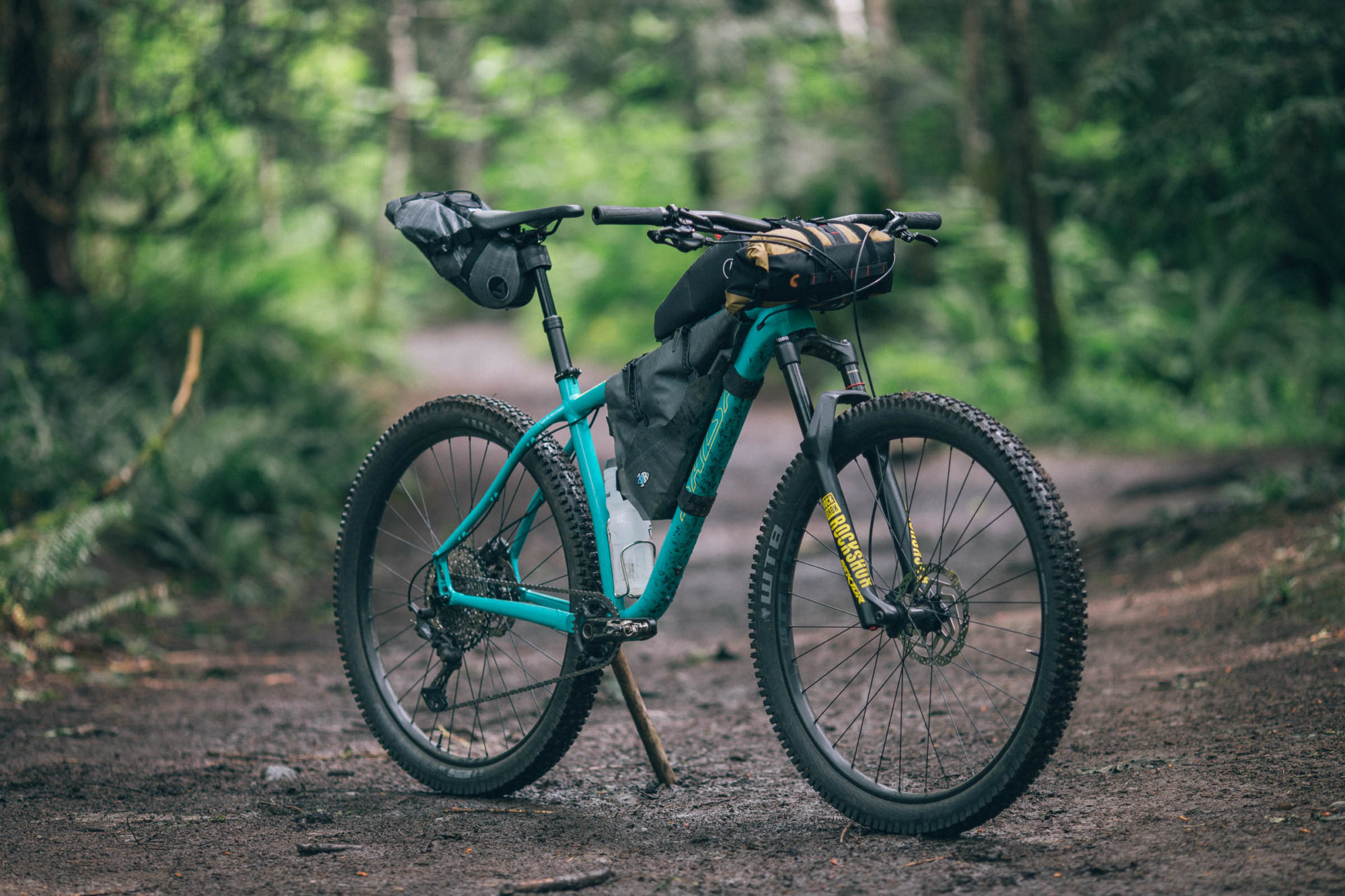
I never found the aluminum frame to be harsh or chattery, and although I did swap out the basic rubber grips and stock WTB Volt saddle for some Ergon alternatives, I found the ride to be comfortable and quiet. I was pleasantly surprised with the TransX dropper post’s performance during my review period, which never required any additional air and handled the extra weight of a loaded dropper post saddle bag without hesitation. However, the 150mm of travel on the large Timberjack, wasn’t enough for my taste. When dropped all the way down, I still couldn’t stand flat footed on the ground, which is really nice for a quick break on the trail. Those with long legs may be inclined to swap the stock dropper post out for something with a little more travel.
It was also great to see some meaty WTB Trail Boss tires on the build, which provided enough grip for the slippery roots and steep descents that the British Columbia’s west coast is known for. The SM-RT10 rotors that came with this bike only work with resin brake pads, meaning that metallic-pads can’t be used. Metallic pads are often better suited for long, wet descents, so this might be an issue for those planning to ride the Timberjack year-round. This may not be a concern for everyone, but would definitely need to be swapped out for those living in the Pacific Northwest.
As for the overall fit of the bike, it feels a little larger (mostly lower in the front end) than other hardtails I’ve ridden, but I was quite happy on a size large. For reference, I am 6’1” tall and have a 33” inseam. I often teater between large and extra-large frames, but the large felt great for trail riding. I liked having a lot of room to move around when out of the saddle, and found I was easily able to shift my weight without ever feeling crowded or cramped—even when loaded up with bags.
All Hail 29 x 2.6
I’ve been a 27.5+ diehard for a number of years now. My Surly Karate Monkey plowed through pretty much anything with 27.5 x 3.0” tires, and when I built up my dream Why S7 I stayed with 27.5” wheels but put a more aggressive 2.8” wide WTB Vigilante to handle the rocks and roots of the Pacific Northwest. Having big volume tires is nice for bikepacking, and the extra floatation is beneficial when riding in sand or chunky rock gardens. The drawback? Comparatively, 27.5+ is slow.
During my review period, I rode the Timberjack almost exclusively. Just last week I hopped on my Why S7 for a good five-hour ride, and damn did it feel sluggish compared to the Timberjack. I knew the Timberjack was fast, but having the chance to compare the two wheel sizes side by side made things really clear for me. In my opinion, the loss in volume is greatly outweighed by the rollover and speed offered by 29 x 2.6” tires. I’ve also found that running a fairly knobby tire, like the WTB Trail Boss found on the Timberjack, isn’t as sluggish in a 2.6” width as it is in a wider tire. These characteristics were most noticeable on the climbs, on both gravel and trail, but I also preferred it on descents as well.

The benefits don’t stop there, though. I noticed far fewer pedal strikes while riding the Timberjack. Although the bottom bracket drop is 8mm less compared to my S7, the Timberjack’s wheels measure to a hair under 30” compared to the S7’s 28.25”—and the Timberjack’s bottom bracket is half an inch higher off the ground. So, what can you take away from all that? I’m putting a 29 x 2.6” wheelset on my S7 as soon as I can, and I have the Timberjack to blame. What’s that? The Why S7 can only clear 29 x 2.3″ tires? Check again…
- MODEL/SIZE TESTED: 2020 Salsa Timberjack XT 29, Size Large
- WEIGHT AS TESTED: 31.2 pounds (14.1kg) with XT M8000 pedals
- Place of Manufacture: Taiwan
- Price: $1,999 USD
- Manufacturer’s Details: SalsaCycles.com
Pros
- Capable trail-ready geometry for chunky, technical descents and singletrack-heavy bikepacking
- 29 x 2.6″ platform is great
- Large main triangle and bosses under the downtube
- Well priced and well specced build, great value
- Shimano 12-Speed build kit
Cons
- Seat tube angle may not be steep enough for some
- Resin-only rotors are limiting
- 35mm handlebar and stem
- Lower end fork and hubs
Wrap Up
The Salsa Timberjack XT 29 has been an incredibly fun bike to ride. Its well specced build kit and reasonable price tag set it apart from other aluminum hardtails, and add up to an incredibly capable and great riding trail bike. The Timberjack’s conservative angles may be less than desirable for non-bikepackers, but they actually increase the bike’s overall versatility and weren’t a deal breaker for me. The Timberjack is still a trail bike at heart and although I think it hits a sweet spot for everyday riding and singletrack-heavy bikepacking, its long front and short rear end isn’t going to be for everyone. With that said, the latest Timberjack builds are quite impressive and the ride quality sets a high standard for what an aluminum hardtail can do. I tried to push the Timberjack pretty hard over the last three months, but I honestly don’t think I came close to finding its limits.
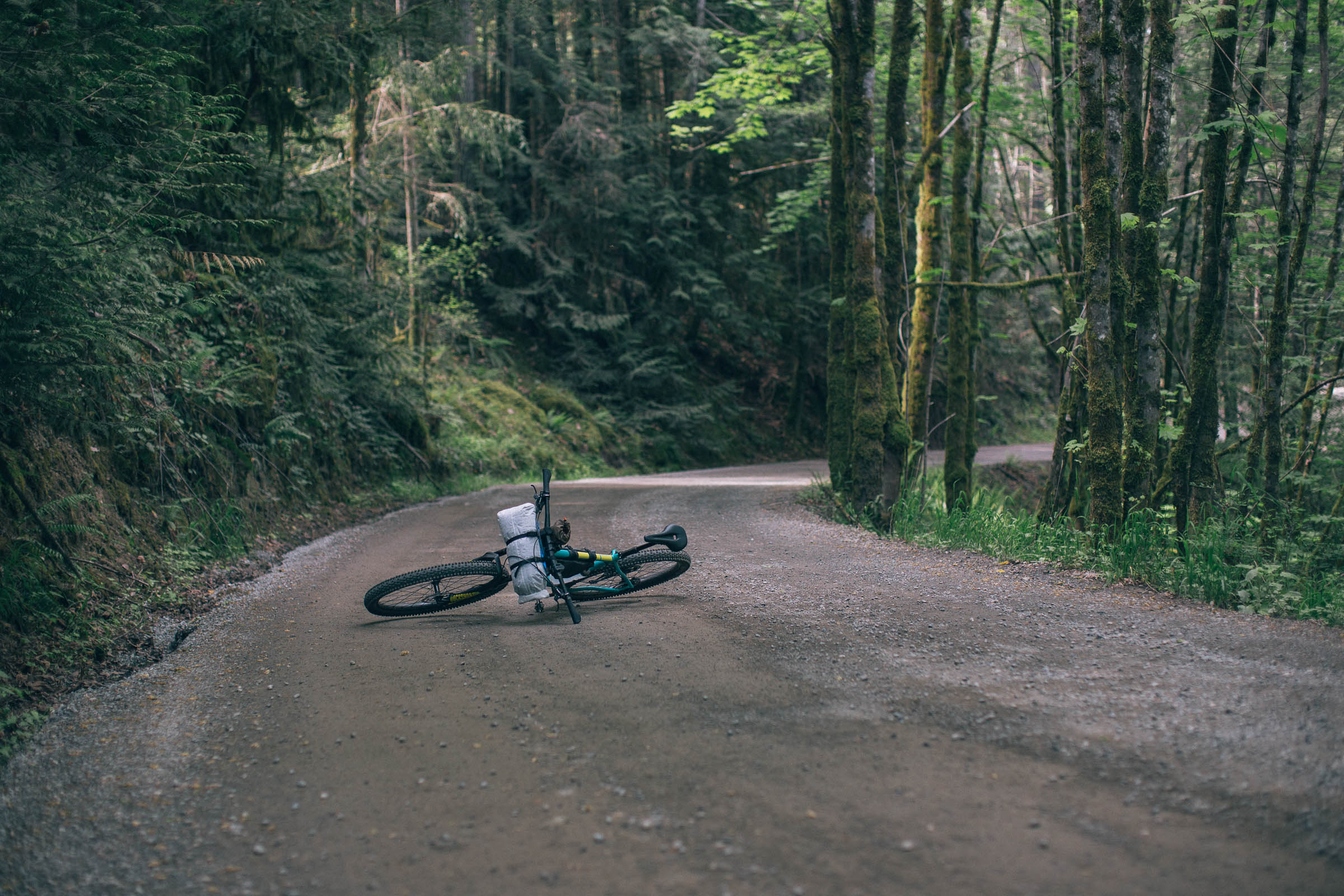
Please keep the conversation civil, constructive, and inclusive, or your comment will be removed.














